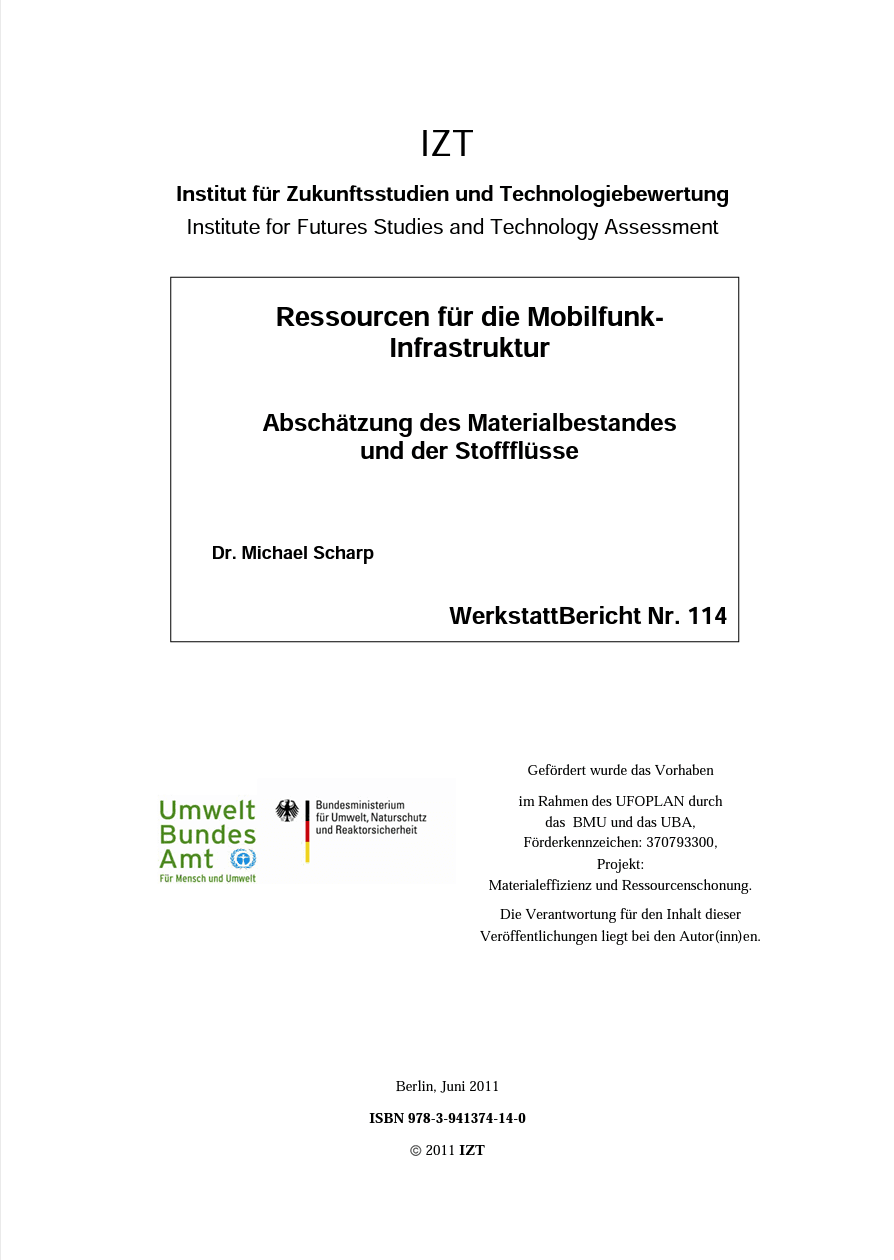Resources for the mobile radio infrastructure
Abstract
We can no longer imagine life without mobile communication. Before the turn of the century, the mobile network was primarily a telephone network. Today it is a powerful communication network that enables telephony and internet. Almost every German uses mobile telephony nowadays. Increasing demand for even faster communication means that the mobile phone network is being expanded more and more. But what resources were needed to build the networks? How high are the annual material flows for maintenance? What resources are needed for nationwide high-bandwidth transmissions? These questions were clarified by the IZT in a sub-project of the project "Material Efficiency and Resource Conservation" - funded by the BMU and coordinated by the Wuppertal Institute. The investigation yielded the following results: There is a parallelism of infrastructures with radio and wired systems. On the one hand, these systems are used in the same way (e.g. surfing via mobile radio or via cable), and on the other hand they are used several times (e.g. telephoning via GSM or UMTS). This parallelism leads to a multiplication of the infrastructure mass. There is a lack of meaningful data on the infrastructure of the mobile network. The order of magnitude of the infrastructure could only be determined through a multitude of assumptions and plausibility considerations. The primary infrastructure of mobile radio is in the order of 100,000 to 140,000 tonnes. Here, the technology for the radio cells, the control of the radio cells and the network control were considered. The secondary infrastructure (customer service, sales outlets, logistics) was not included. The annual material flow for maintenance is also relatively low, at around 5,000 to 12,000 t per year. Between 50 and 70 % of this material flow is determined by constructional and electronic components. However, there are considerable uncertainties in the utilisation time of the infrastructure components. A significant expansion of the fast UMTS network by approx. 40% (approx. 14,000 new base stations, 140 controller stations as well as some new control centres) could induce a material flow of 13,000 tonnes.
